If you’ve spent a lot of time on Netflix you may have noticed a pattern in the interior design. Often, when a show is about the rich and famous, you’ll see the characters swanning around expansive loft apartments, oozing chic effortless style. What is this look? It’s industrial design, of course.
However, while industrial design is often associated with fancy New York apartments, it’s stylistic principles can be applied to any and all homes. If you want to add a touch of glamour to your household, here are our designers top tips for adding some industrial flair to your home.
Open up your space
One the key features of industrial design is space, space, space. Should you have small, closed off rooms, the rough and ready materials might feel overwhelming, and the style won’t quite work. Therefore, if you’re really committed to mastering the industrial effect, it’s worth changing your layout to open-plan.
Open-plan can work wonders for your home, especially if a lot of space is being wasted on hallways. However, if you’re someone who enjoys a little bit of privacy, or doesn’t want kitchen smells permeating into the living room, a broken plan layout is another good option. This is where you would break up the space with either half-walls, shelving, or a strategic fireplace.
Focus on the right materials
Many people think industrial design is about nothing but concrete and shiny steels (and these materials are important) but you shouldn’t be afraid to mix the old with the new. Trying adding vintage timber items into your design to add a variety of colour and texture into your design. This could be a wooden vanity mirror in the bedroom, a coffee table, or mixing a wooden kitchen island against concrete floors.
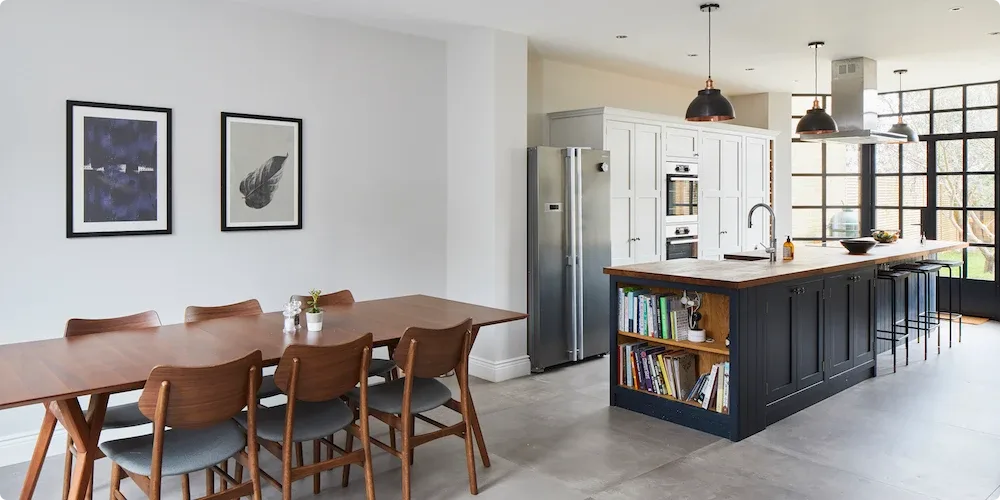
This renovation incorporated industrial elements alongside wooden furniture.
Getting the colours right
On the whole, most industrial interiors stick to a neutral colour palette. This includes…
However, this doesn’t mean you have to live in complete greyscale. While the majority of your space will likely follow this monochrome scheme, you could add a touch of interest with some fun pops of bold colours. Think a bright red chair, some yellow pendant lights, jazzy throw cushions. If you only get one shot at some high impact colour, don’t hold back!
Beautiful silhouettes
When an architect designs an industrial space, they’re often going to be focused on the silhouettes the building creates. Industrial design likes squared off lines and blocky shapes. If figuring out how to create a utilitarian cohesiveness isn’t your strong suit, it’s best to discuss your preferred interior design with an architect.
How much do architects charge? Find out here.
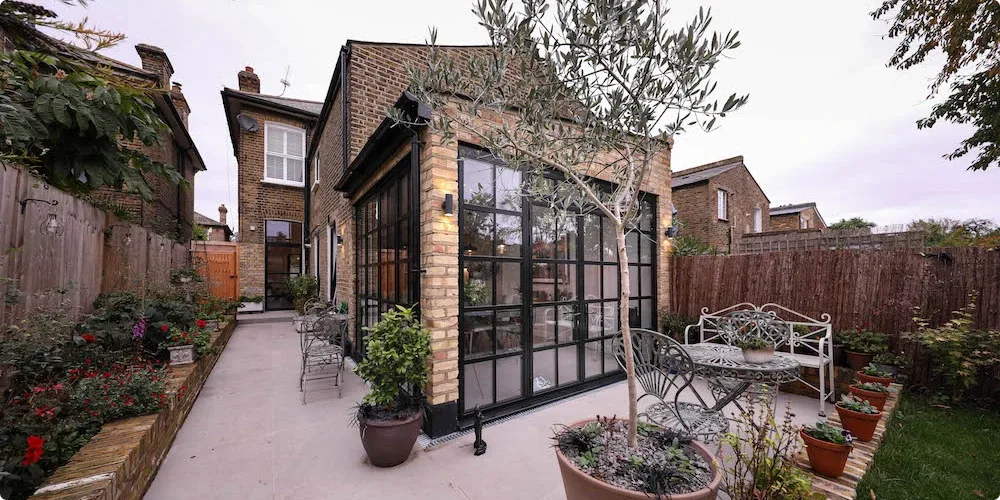
Get in touch with an architect and ask about achieving the industrial look.
Accessorise with style
If there’s one thing industrial style hates it’s clutter. Therefore, you’ll want to be spartan with how much decoration you add. Rather than opting for a lot of different trinkets, it’s recommended you draw attention to well-picked pieces of furniture that speak for themselves. Be this an attractive L-shaped sofa in the living room, or a large dining room table in the kitchen.
Plants can work well in an industrial space, to contrast against those grey tones. However, rather than a small plant here and there, we would suggest investing in those bigger varieties, ones that can really stand on their own in an empty corner.
You might also consider investing in some stylish wall art. Framed prints will work best, but you can go for canvas if you’ve got the money for a big show-stopper. Naturally, abstract art will work best for this interior trend.
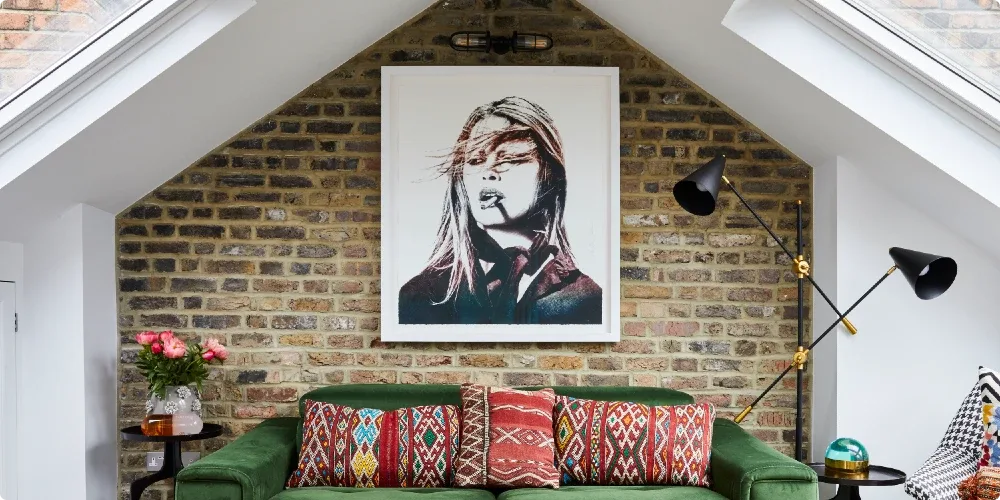
Contemporary art works well on the wall of this industrial styled loft extension.
Light up the room
Your lighting can provide more than just the practicalities. They’re a fantastic way to add some extra character into your space, without causing any of that dreaded clutter.
Pendant lights tend to be a favourite with interior designers. If this is the route you wish to go down, talk over the best locations with your architect. Rather than placing them in just any location, your lighting should be concentrated around the areas you use most, such as countertops you plan on working from.
Learn more about getting your lighting right.
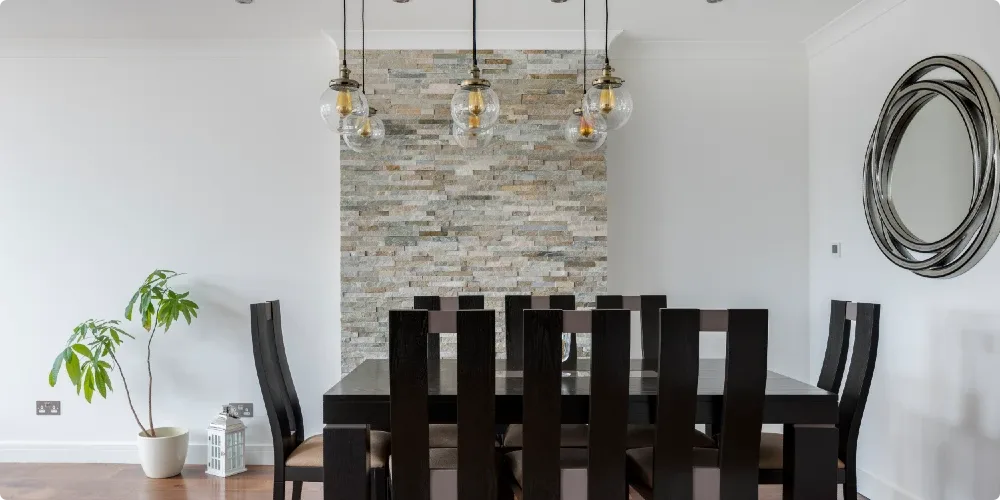
The pendant lights work well within this industrial inspired dining room.
Add some texture
Texture is a friend to all interiors and industrial style is no different. Rather than using fabric to develop this, look towards the materials in your build. A concrete floor can bring subtle texture to your flooring, while exposed brick is a popular favourite for those lovers of the London stock.
Create character
One of the reasons industrial style is so popular with architects is that it really focuses on the build, rather than just the furnishings. Stripped back, this interior design really hones in on those characterful touches you have in your home. Whether this is historical brickwork or even the structural beams needed to create an extension. You might be surprised by just how much personality a building can provide - even new builds!
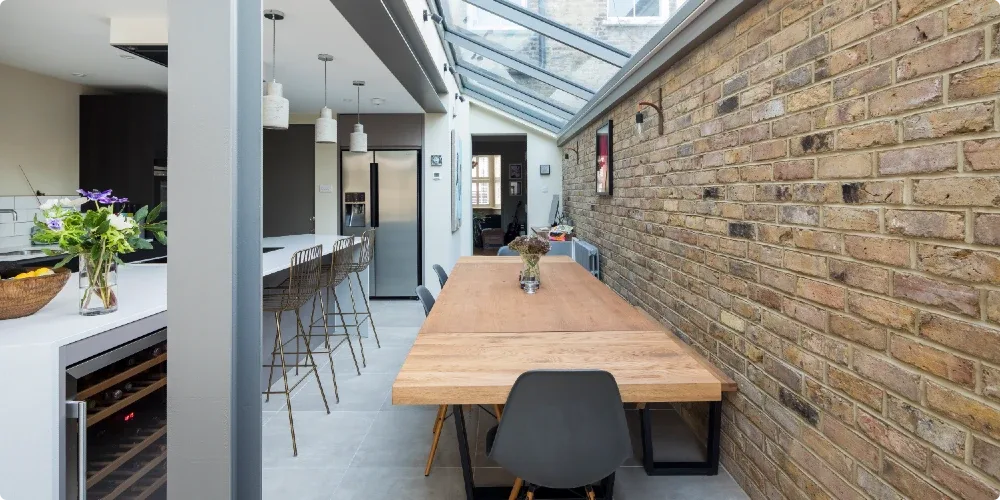
How many characterful features can you spot in the industrial styles side return extension?
Don’t be afraid to fake it
Lacking an attractive brick to expose? Not willing to commit to pouring concrete onto your kitchen floor? Whatever the reason, don’t be afraid to fake it.
Rather than going for a real concrete floor, which can make accessing your pipes very difficult in the future, you can fake the look by using concrete style tiles. Likewise, you can add in another layer of brick into your home, should your existing walls not be attractive enough.
Get your hands dirty
Remember: industrial design doesn’t have to cost the earth. The rough and ready look that it favours makes it a perfect match for anyone with some DIY skills. Bare brick works wonderfully with some rough timber furniture made from pallets. Likewise, upcycling old countertops to make a quirky dining table can add a priceless touch of charm to the room.

An upcycled suitcase makes for a quirky storage space at the foot of this bed.
Summary
If you want to create a stunning industrial style home, remember these top 10 points…
- Avoid your space being overwhelmed by industrial centre pieces by opting for an open-plan layout
- Experiment with your materials and focus on matching cooler toned features, such as concrete and steel beams, with natural opposites like timber
- While industrial design tends to favour a monochrome palette, adding bold pops of colour can help brighten up the space
- If you work with an architect, they’ll be able to incorporate those blocky silhouettes this style is known for
- Avoid clutter and focus on a few showstopping accessories, like wall art or big, leafy house plants
- Pendant lights and other stylish forms of lighting can bring both style and practicality
- Use the texture in your building materials to add interest into the room
- Find the character in your building and make it shine
- If you can unearth some hidden characteristic beauty in your home, fake it!
- If you like a bit of DIY, try turning your hands towards creating rustic pieces of wooden furniture to spice up your industrial design



























